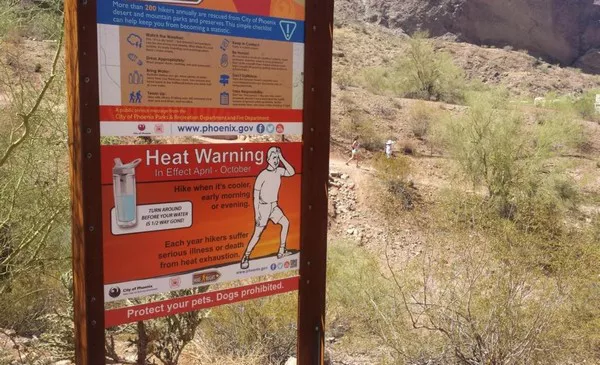The ongoing extreme summer heat in the U.S. has claimed the life of another hiker. Diem Le Nguyen, 50, was found deceased on Monday about a quarter of a mile off the Black Mountain trail in Southern California. Hours earlier, she had called fellow hikers in distress, stating she was “extremely hot and needed water,” according to San Diego police.
Her death follows several recent fatalities in Colorado and Arizona and numerous near-fatal incidents nationwide, all occurring under a severe “heat dome.” Popular trail areas have reported temperatures soaring to 114°F (about 46°C).
Series of Heat-Related Deaths
On June 10, Marsha Cook from Iowa collapsed and died while attempting a “moderate to steep” trail to the Colorado National Monument. In Sedona, Arizona, a 44-year-old Pennsylvania woman succumbed to heat exhaustion on June 14 while hiking with her family. Two days later, a 41-year-old man died on the Bright Angel Trail in the Grand Canyon. Though the National Park Service has not confirmed his death was heat-related, they strongly advise against hiking below the rim during excessive heat warnings.
Additionally, a California hiker was rescued after being lost for ten days in a wildfire-altered landscape near Santa Cruz. Lukas McClish, 34, survived on wild berries and water collected in his boot.
Dangers of Hiking in Extreme Heat
Hiking in extreme heat can lead to heat exhaustion, heat stroke, hyperthermia, and hyponatremia, all of which are potentially fatal, according to the U.S. National Park Service. In 2022, more than 1,700 people in the U.S. died from heat-related causes, per the Centers for Disease Control and Prevention (CDC).
Experts emphasize that even seasoned hikers can make errors that necessitate urgent rescue amid blistering temperatures. Ms. Nguyen was separated from her group, which included around 100 family and friends, on Sunday when temperatures reached 95°F. She continued hiking after the group turned back around 8 a.m. local time. About two hours later, she called her family, struggling with the heat and desperate for water.
San Diego police officer Dan Meyer noted that Ms. Nguyen nearly made it to safety. “She was a quarter-mile away from a population, from reaching a street,” Meyer told the San Diego Union-Tribune. “She nearly made it out.”
“Hiking in the summer months is dangerous, especially when it’s super hot out,” Meyer stated on Monday. “Even if you take all the precautions available, there’s still a chance of ending up in a dire situation.”
Descending into canyons and deserts also poses the risk of “temperature inversion,” where lower areas remain significantly hotter than higher starting points.
Common Rescues Amid Heat
Isaac Sanchez of the California Department of Forestry and Fire Protection (CalFire) told BBC News that the agency often responds to heat-related illnesses among hikers in remote areas. Sanchez described heat-related emergencies on hiking trails as “a very, very common rescue” in the San Diego area.
One frequent and deadly mistake hikers make is not carrying enough water. Despite the weight, Sanchez emphasized, “we want to see folks carrying gallons.” He advised, “An ounce of prevention is worth a pound of cure. It’s better to have too much water than not enough because we don’t know what’s going to happen later in the day.”
In the outdoors, “being overly prepared is a good thing,” he added. CalFire advises hikers not to hesitate to call for rescue to avoid worsening their situation. “Regardless of how experienced or prepared we are, sometimes we just get into situations we can’t get out of without assistance,” Sanchez concluded.

